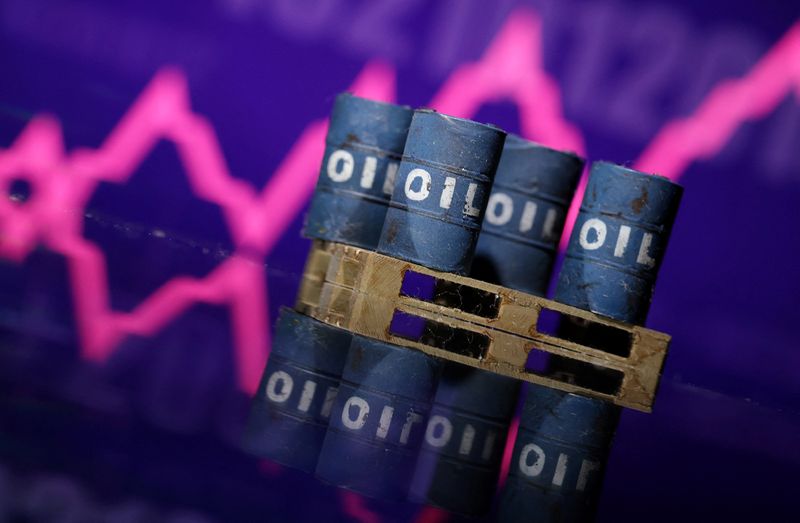Commodities
Oil prices steady on profit-taking ahead of US job data

By Paul Carsten
LONDON (Reuters) -Oil prices were broadly steady on Thursday as investors took profits from earlier gains fuelled by larger than expected declines in stocks.
futures dipped 13 cents, or 0.2%, to $84.95 a barrel by 1120 GMT and U.S. West Texas Intermediate (WTI) crude was down 6 cents, or 0.1%, at $82.79. Both had registered gains in the previous session.
“Profit-taking is reasonable ahead of the U.S. jobless claims data, which will shape investors’ view on (interest) rate cuts this afternoon,” said Tamas Varga of oil broker PVM.
Crude inventories in the United States, the world’s largest oil consumer, fell by 4.9 million barrels last week, data from the U.S. Energy Information Administration showed on Wednesday. That exceeds a decline of 30,000 barrels forecast by analysts in a Reuters poll and a drop of 4.4 million barrels in an American Petroleum Institute report.[EIA/S][API/S]
“Healthy demand signals from the U.S. outweigh concerns from modest Chinese growth last week,” said Priyanka Sachdeva, senior market analyst at Phillip Nova.
“Hopes of a Fed easing (of interest rates), which can boost economic growth, and current summer travel in the U.S. are ensuring enough traction in oil demand from the world’s largest economy.”
The prospects of cuts to interest rates in both the U.S. and Europe over the coming months helped to support the market.
Federal Reserve officials said on Wednesday that the U.S. central bank is closer to cutting rates given inflation’s improved trajectory and a labour market in better balance, possibly setting the stage for a reduction in September.
U.S. economic activity expanded at a slight to modest pace from late May through early July with firms expecting slower growth ahead.
The European Central Bank, meanwhile, is all but certain to keep interest rates unchanged on Thursday, but it signalled that its next move is likely to be a cut.
However, Chinese economic growth remains a concern. Chinese leaders signalled on Thursday that Beijing would stay the course with economic policy, though few concrete details were disclosed. Together, those helped to check investor hopes of a push to boost consumption in the world’s second-largest economy.

“There is no clear signal of change in macro policies,” said Zhang Zhiwei, chief economist at Pinpoint Asset Management.
The dollar, meanwhile, was down for a third straight session. A weaker U.S. currency can boost demand for oil by making dollar-priced commodities cheaper for buyers holding other currencies.
Commodities
Oil prices rise; U.S. crude inventories plunge, Russia-Ukraine truce eyed
Commodities
India’s Reliance to stop buying Venezuelan oil over US tariffs, sources say
Commodities
Oil prices climb on Venezuela supply worries

 Forex3 years ago
Forex3 years agoForex Today: the dollar is gaining strength amid gloomy sentiment at the start of the Fed’s week

 Forex3 years ago
Forex3 years agoUnbiased review of Pocket Option broker

 Forex3 years ago
Forex3 years agoDollar to pound sterling exchange rate today: Pound plummeted to its lowest since 1985

 Forex3 years ago
Forex3 years agoHow is the Australian dollar doing today?

 Cryptocurrency3 years ago
Cryptocurrency3 years agoWhat happened in the crypto market – current events today

 World3 years ago
World3 years agoWhy are modern video games an art form?

 Commodities3 years ago
Commodities3 years agoCopper continues to fall in price on expectations of lower demand in China

 Economy3 years ago
Economy3 years agoCrude oil tankers double in price due to EU anti-Russian sanctions























